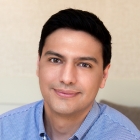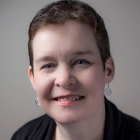You are here
Mirror movements and brain pathology in children with unilateral cerebral palsy
Abstract
Aim: We systematically examined the relationship between mirror movements and brain lesion type, corticospinal tract (CST) organization, and hand function to determine the relevance between mirror movements, brain lesion, the CST pattern, and hand function in children with unilateral cerebral palsy (CP).
Method: Forty-eight children (mean age 9y 9mo [SD 3y 3mo], range 6-18y; 30 males, 18 females) with unilateral CP participated. Mirror movements, brain lesion type, CST pattern identified by transcranial magnetic stimulation, and clinical outcomes were evaluated. Children performed four unilateral tasks: hand opening/closing, finger opposition, individuation, and finger 'walking'. Mirror movements induced in the contralateral hand were scored using standardized criteria (scores 0-4 using the Woods and Teuber scale).
Results: We found that children with periventricular lesion may have stronger mirror movement scores induced in either hand than those with middle cerebral artery lesion (more affected hand: p=0.02; less affected hand: p<0.01). The highest mirror movement score a child exhibits across the tested tasks (i.e. scores of 3-4 using the Woods and Teuber scoring criteria) may potentially be an indicator of an ipsilateral CST connectivity pattern (p=0.03). Significant correlations were observed between higher mirror movement scores when performing hand opening/closing as well as finger walking and better unimanual dexterity (Spearman's rank correlation coefficient rs =0.44, p=0.002; rs =0.46, p=0.002 respectively).
Interpretation: Brain lesions may be predictive of the strength of mirror movements in either hand in children with unilateral CP. Our findings warrant further studies to extensively investigate the relationship between mirror movements and the underlying brain pathology.





